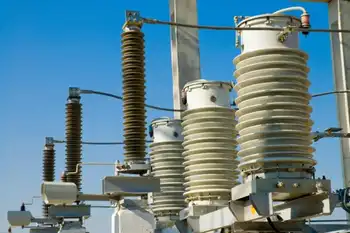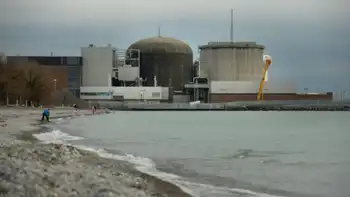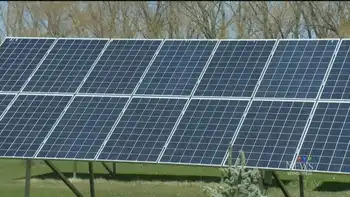Wind farm opponents fear sweeping legislation
By National Post
Substation Relay Protection Training
Our customized live online or in‑person group training can be delivered to your staff at your location.

- Live Online
- 12 hours Instructor-led
- Group Training Available
George Smitherman, the province's Minister of Energy and Infrastructure, unveiled the legislation on February 23, drawing international attention along with endorsements from environmental groups and developers. The comprehensive Act would set a fixed price for electricity generated from renewable sources, establish efficiency standards for appliances and require homeowners to conduct energy audits before selling their houses.
Most provinces have moved to add more "green" energy to their power supply, but the $5-billion Ontario plan sets a new standard. The proposed legislation also sets province-wide guidelines for the location of energy projects and kills municipalities' power to block them.
Wind farm opponents worry the new approval process will make it possible to push projects forward without the support of the surrounding community.
"We are very concerned that the provincial government is simply going to pay lip service to our concerns," said Beth Harrington, a spokeswoman for Wind Concerns Ontario, an organization representing more than a dozen community groups across the province.
"This is a new technology and the wind turbines are getting bigger and bigger and bigger. The turbines are going to have a greater impact as time moves on and we need some clear guidelines."
The proposed legislation does not indicate how close wind turbines will be allowed near homes, roads or environmentally sensitive areas. These details and the final approval process will be established through consultation with municipalities, according to Amy Tang, a spokeswoman for Mr. Smitherman.
"As part of developing the approval process, we will be outlining what would be involved in community consultation or outreach," Ms. Tang said, adding later, "We're going to be establishing provincial standards for setbacks [from residences], but that is not to say we will not be allowing public consultation."
It is worrisome that the province's legislation has the potential to override local bylaws meant to curtail the effects of noise, low frequency vibrations and outdoor light sources on residents, said Gary Mooney, president of Concerned Citizens for Prince Edward County, another group contending with wind farms.
"Noise and flashing lights are the kinds of things that will be of concern to people living close to these turbines," Mr. Mooney said. "So really, this is a major uploading of the responsibilities for the rules relating to wind turbines and I would expect some municipalities are not going to be very happy."
The Association of Municipalities of Ontario has endorsed the new legislation, but said in a statement that it expects "proposals to change municipal planning authority will be offset by processes that provide for municipal input and public consultation on energy issues."
The Ontario plan will also require homeowners to conduct an energy audit on a home they choose to sell, a move that drew considerable criticism.
The audit, which costs around $300, will point out where a home can be improved in order to increase its energy efficiency. Premier Dalton McGuinty said the audit is a simple matter that lets a homebuyer know what, if anything, can be done to improve the home's energy efficiency.
He suggested sellers negotiate with their buyer and try to build the additional cost of the audit and any improvements into the home's sale price.
However, the Ontario Real Estate Association said there is nothing simple about the new audit. President Gerry Weir warned audits could end up costing home sellers thousands.
"It's not the initial cost of these audits that concerns us," Mr. Weir said in a release. "These audits will be used by home buyers as bargaining chips to significantly reduce the final selling price."
The audit could see trivial matters, such as improperly insulated windows, give a home buyer the opportunity to request $10,000 or more off the asking price of a home by claiming they need to install new windows before they move in.
"Today's economic downturn is a terrible time to introduce this measure. Home sellers are already worried about lost equity in their homes," said Mr. Weir. "A move like this, which will reduce their value even further, will not help them in any way."











